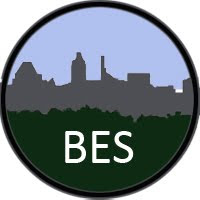April 2014 All-Project Meeting: Discussing Theory as a Path to BES IV
A Suite of Preparatory Activities
 The activities we have undertaken this year – our quarterly All-Project Meetings, our book of the year, and our webinars on the structure and content of theory in BES are intended to help us prepare for the renewal proposal. This is serious work, and everybody in BES ought to be involved in these activities.
The activities we have undertaken this year – our quarterly All-Project Meetings, our book of the year, and our webinars on the structure and content of theory in BES are intended to help us prepare for the renewal proposal. This is serious work, and everybody in BES ought to be involved in these activities.The April Meeting as a Step toward BES IV.
There is homework for the meeting.
Please read or review the following materials.
Theory of Urban Heterogeneity
1. Cadenasso, M.L., E.J. Rosi-Marshall, S.T.A. Pickett, et al. TBD. A Theory of Urban Heterogeneity: A Framework to Promote Integration and Hypothesis Generation for BES IV. https://drive.google.com/file/d/0Bx-QKDoShVRkZFBnTGwwWHBEX28/edit?usp=sharing
Structure and Use of Ecological Theory
2. Kolasa, J. 2011. Theory makes ecology evolve. Pages 21-49 in S. M. Scheiner and M. R. Willig, editors. The theory of ecology. University of Chicago Press, Chicago.
3. Scheiner, S. M. and M. R. Willig. 2011. A general theory of ecology. Pages 3-18 in S. M. Scheiner and M. R. Willig, editors. The theory of ecology. University of Chicago Press, Chicago.
Metacommunity Theory
4. Leibold, M. A. 2011. The metacommunity concept and its theoretical underpinnings. Pages 163-183 in S. M. Scheiner and M. R. Willig, editors. The theory of ecology. University of Chicago Press, Chicago.
5. Swan, C. M., S. T. A. Pickett, K. Szlavecz, P. Warren, and K. T. Willey. 2011. Biodiversity and community composition in urban ecosystems: coupled human, spatial, and metacommunity processes. Pages 179-186 in J. Niemela, editor. Handbook of Urban Ecology. Oxford University Press, New York.
The River Continuum and the Urban Watershed Continuum
6. Kaushal, S.S., K.T. Belt. 2012. The urban watershed continuum: evolving spatial and temporal dimensions. Urban Ecosystems. 15:409-435. doi:10.1007/s11252-012-0226-7.
7. Vannote, R. L., G. W. Minshall, K. W. Cummins, J. R. Sedell, and C. E. Cushing. 1980. The river continuum concept. Canadian Journal of Fisheries and Aquatic Sciences 37:130-137.
Locational Choice
8. Irwin, Elena G., Kathleen P. Bell, Nancy E. Bockstael, David Newburn, Mark D. Partridge, JunJie Wu. 2009. “The economics of urban-rural space”Annual Review of Resource Economics, 1: 435-459.
9. Brasington, D. 2013. “Housing choice, residential mobility, and hedonic approaches.” In Fischer, M. and P. Nijkamp (ed.), Handbook of Regional Science, Berlin: Springer Verlag, pp. 147-166
Agenda
Here’s the agenda for the meeting, to be held in room 206 of the Technology Research Center building on the UMBC campus (5200 Westland Blvd
Baltimore, MD 21227):
Worksheets
At the meeting we will use two worksheets to extend our thinking, integrative, and data strategies within the theoretical structure begun in the “heterogeneity essay” cited above. Copies will be handed out at the meeting, but previews are available here:
Join the Meeting In Person or on the Web
The planning for the BES IV proposal has begun, and your contributions to that are crucial. Be there or be square! If you cannot attend the 8 April 2014 meeting in person, we encourage you to join via Go-To-Meeting. The link to start the day at 9:00 a.m. is here: https://global.gotomeeting.com/join/716973005 (To break the meeting recording into manageable chunks, we will generate separate links for the time periods after 10:30 a.m. EDT on that day.)




